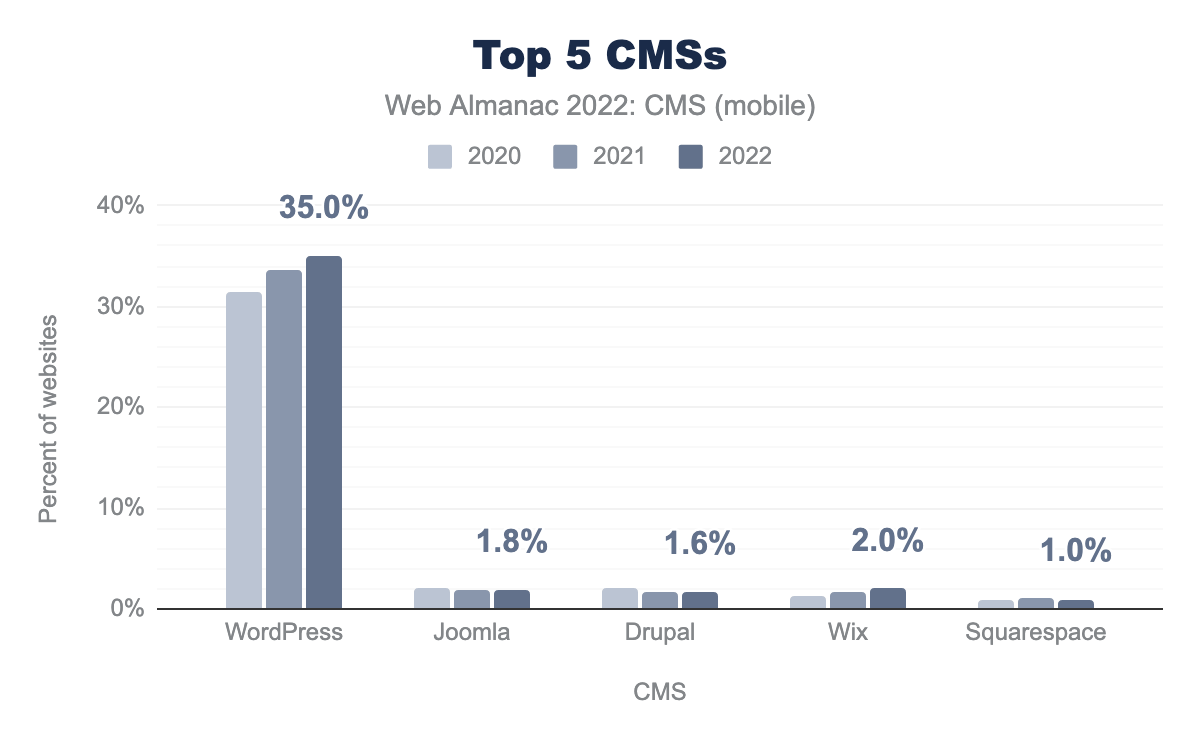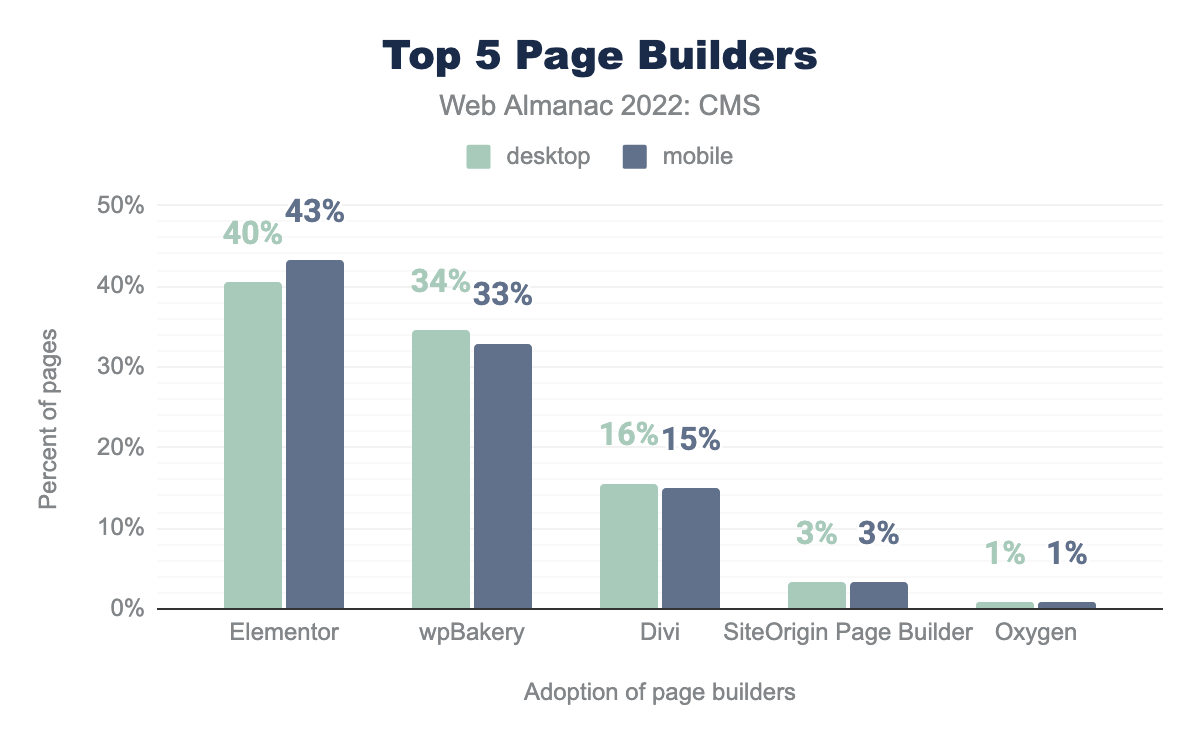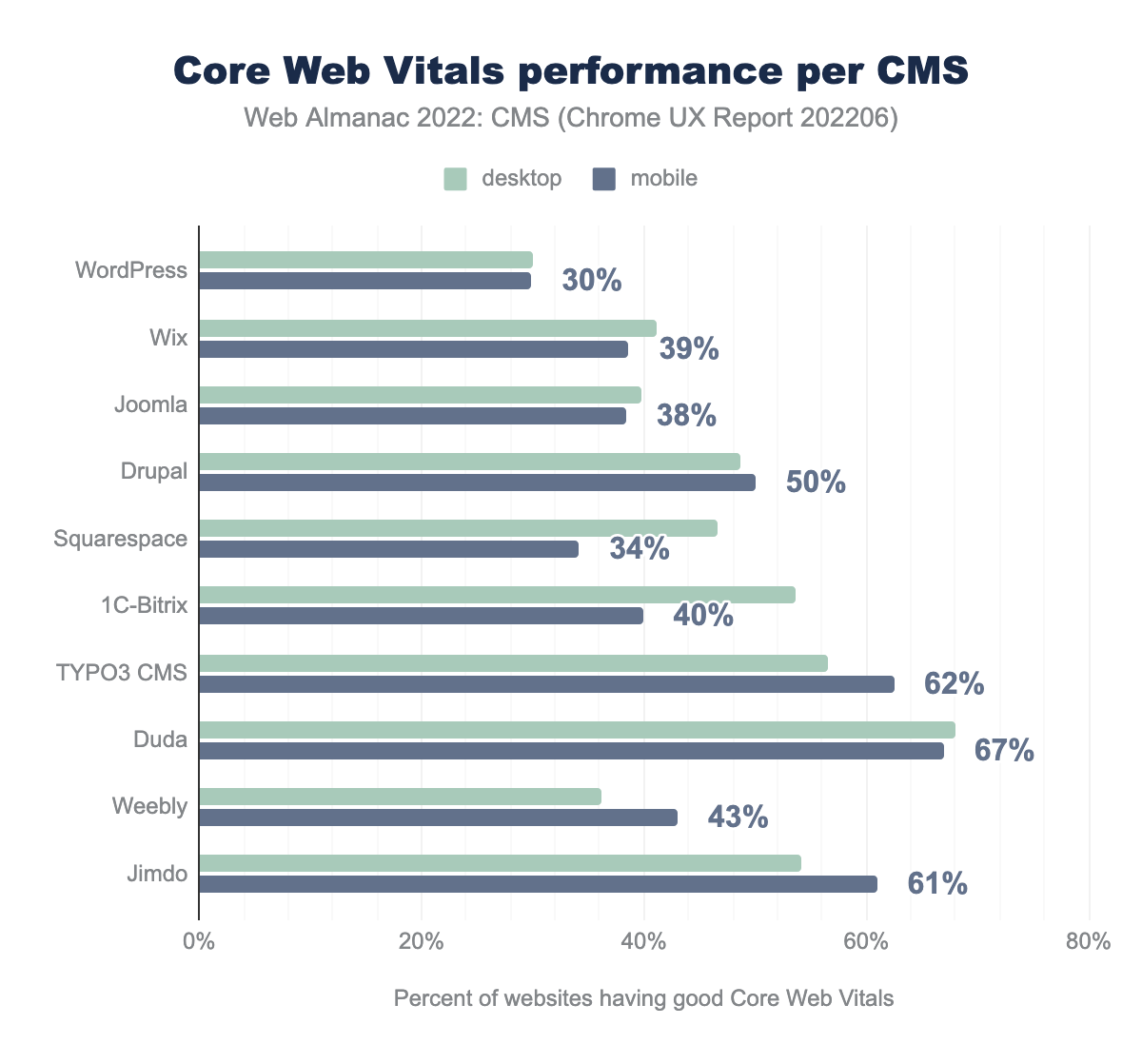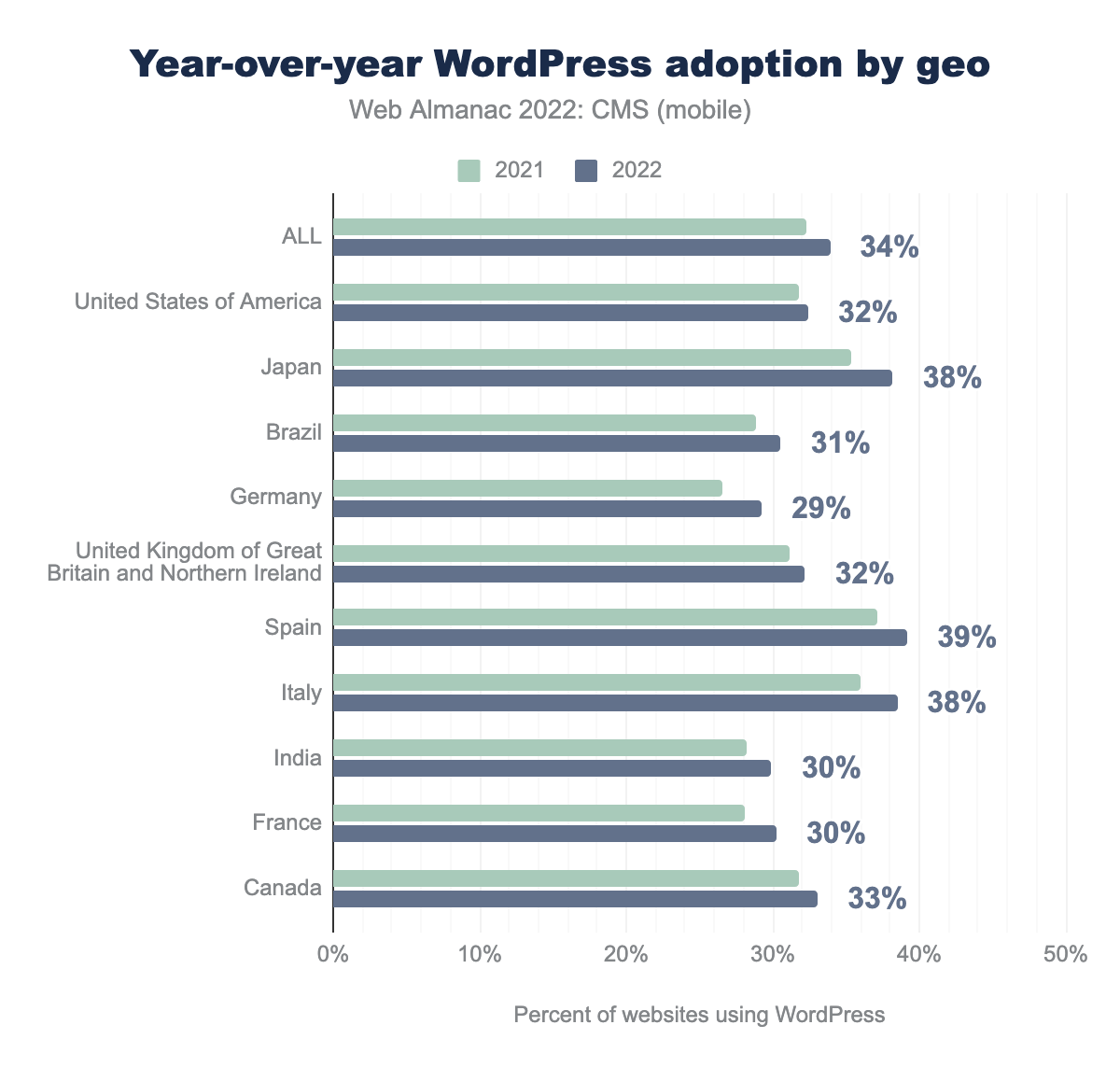HTTP Archive has published its annual State of the Web report, the 2022 Web Almanac. The report contains data on page content, user experience, content publishing, and distribution with contextual insights from subject matter experts. It draws from a dataset that evaluates millions of web pages and is continuously updated on a monthly basis. Metrics from the June 2022 crawl, used for the report, are publicly queryable on BigQuery.
The CMS chapter is of particular interest to WordPress users and product developers. HTTP Archive’s dataset, which is based on Wappalyzer’s definition of a CMS, identified more than 270 different CMS’s. WordPress is still leading the market with 35% adoption on mobile—followed by Wix (2%), Joomla (1.8%), Drupal (1.6%), and Squarespace (1.0%).

In contrast to W3Tech’s stats, which show WordPress market share declining from March – June 2022 and then holding steady, the Web Almanac shows WordPress up 1.4% over 2021 on mobile and 0.2% over 2021 on desktop. The methodologies differ in that W3Tech includes only the top 10 million websites in its statistics, as defined by the Alexa top 10 million and the Tranco top 1 million list. The Web Almanac’s data set includes 8,360,179 websites, where 7,905,956 are mobile websites and 5,428,235 are desktop websites.
Drupal and Joomla are slowly declining and Wix has grown over the past three years, though it still represents just 2% of the CMS market.
New in the data this year is the top five WordPress page builders. Wappalyzer’s detection found that 34% of the WordPress websites in the dataset are using a page builder plugin. It would be interesting to see these numbers compared with how many sites are using just the block editor with block plugins, along with sites using the Classic editor and no page builder, but this wasn’t part of the data collection here.

Elementor is the most popular among the page builders, sitting at 40% of desktop sites and 43% of mobile WordPress sites. WPBakery is not far behind at 34/33%, followed by Divi, SiteOrigin, and Oxygen.
“As we see it today, page builders exert significant influence on the performance of a site,” CMS chapter author Jonathan Wold said. “Historically, page builders have been anecdotal indicators of poor performance. As one example, our dataset indicates that it’s not uncommon for websites to have multiple page builders installed, adding a significant increase to the resources loaded by a site.
“Now that we’re tracking page builder data, we’ll have the opportunity in future editions to evaluate year-over-year changes in page builder adoption and look for correlations in those changes to the overall performance of WordPress as a CMS.”
The Web Almanac also published data for Core Web Vitals performance and the results vary widely across CMS’s. Duda, a drag-and-drop website builder used by less than 1% of websites, is posting the highest numbers with 67% of its sites with passing CWV scores. TYPO3 (62%), Jimdo (61%), and Drupal (50%) are not too far behind. WordPress, which had 19% passing last year is up to 30% in 2022, and is catching up to Joomla (38%) and Wix (39%). Scoring consistently high on Core Web Vitals is more difficult for CMS’s that are primarily hosted independently around the web, as opposed to a centralized SaaS platform, so improvements here may be more hard won.

The report goes into more detail on the top platform’s performance across specific metrics, like Largest Contentful Paint (LCP), First Input Delay (FID), and Cumulative Layout Shift (CLS). Median Lighthouse performance scores for most platforms were low and in need of performance across the board. SEO scores are consistently high across all of the leading CMS’s.
The median Lighthouse accessibility scores for the top CMS’s ranges between 77 and 91. WordPress falls in the middle with 86 and Squarespace scored the highest in this category with 91.
The report also includes a few other interesting WordPress-specific charts, such as year-over-year adoption by geography. WordPress appears to be the most popular in Spain (39%), Italy (38%), and Japan (38%).

The Web Almanac also published data for WordPress origins with passing scores for Core Web Vitals by geography. Japan is the leader at 52%, followed by Canada (49%) and Germany (48%).
“Also worth noting is the large disparity across geographies, with Brazil at 10% total compared to Japan at 52%,” Wold said in the report. “Brazil on the low end is growing, though, improving 100% year-over-year. As we evaluate next year’s dataset, it may be worth investigating the low end performers further to identify potential causes and opportunities for improvement.”
Check out the full report in the CMS chapter for a more data on the leading platforms. The 2022 Web Almanac also includes a trove of information on broader web topics, including accessibility, security, sustainability, interoperability, and more, thanks to the efforts of 108 volunteers.
